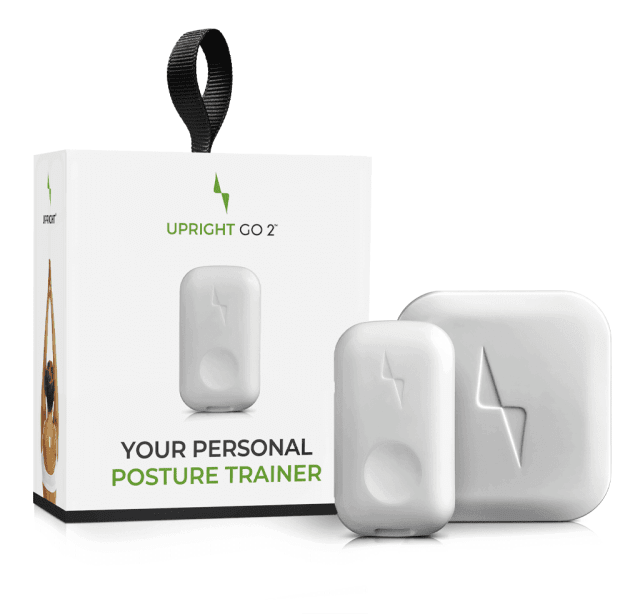Kyphosis: The Hunch Back Posture
Upright

What is a hunch back?
No, we’re not talking about the Disney movie. Hunch back, also known as Kyphosis, is a severe curvature of the spine (okay, so kind of like the Disney movie). Hollywood has portrayed having a hunch back as abnormal and irreversible, but it’s actually a lot more common and treatable than you realize.
It’s normal for your upper back to have a slight curve that helps to support the weight of your head and absorb shock/pressure. But Kyphosis occurs when this natural curve is much more pronounced than usual, forming a hump on your back. Kyphosis doesn’t only create the appearance of slouching, it can also lead to painful pressure on your spine. There are many different types of Kyphosis, often affecting different age groups.
Let’s take a closer look at what causes Kyphosis, options for treatment, and posture correction.
What are the causes of Kyphosis?
Kyphosis can affect anyone. However, certain types of Kyphosis – such as postural Kyphosis, which is often a result of poor posture or slouching – can be prevented. Other possible causes of Kyphosis can include: old age, scoliosis, Scheuermann’s disease, osteoporosis, arthritis, spinal injury, or slipped disks in your back. Less common causes include: spinal infection, tumors, spina bifida, connective tissue disease, Polio, Paget disease, or muscular dystrophy.
When should I seek treatment for Kyphosis?
If you only have a slight hunch back, you may not need to seek treatment at all. However, if you’re experiencing pain, breathing difficulties, or fatigue, treatment may be unavoidable.
Because so much of your movement depends on your spine’s health, it’s imperative that you treat any spine-related issues as they arise. This can help reduce the risk of more serious complications (including back pain and arthritis) further down the line.
How is Kyphosis treated?
If you have Kyphosis, you will most likely be referred to an orthopedist. The orthopedist will examine your spine and X-rays to figure out the best course of action. Treatment varies depending on the type of Kyphosis.
If you have postural Kyphosis, you may do physical therapy to improve your posture. If you have congenital or Scheuermann’s Kyphosis, consider the following treatment options:
Observation
You’ll make regular visits to the doctor to check that the Kyphosis hasn’t progressed any further/is getting better. In some cases, treatment may not be needed.
Wear a back brace
Occasionally, your doctor may recommend that you wear a back brace until you stop growing. The brace won’t improve the curve in your back, but it can sometimes stop it from worsening.
Physical therapy
Physical therapy can help to strengthen your back and core muscles to better support your spine.
Surgery
This usually isn’t necessary, except in very severe cases. Your orthopedist will know the needs of your spine best.
What can I do to prevent Kyphosis?
Sadly, Kyphosis is increasingly common. As people become more sedentary, working office jobs rather than engaging in physical labor, osteoporosis rates in both men and women are on the rise.
Age-related Kyphosis often occurs because of osteoporosis. As the spine and the muscles that support the back become weaker, the vertebrae in the back are much more vulnerable to compression fractures, which can slide the bone down the spine and, over time, cause the spine to develop a curve or hunch back.
One beneficial way to avoid Kyphosis is to keep the bones in your body strong. Keeping your bones strong can start by following some of these simple suggestions:
Make sure you’re getting enough protein
Not just for the muscle heads, protein helps to improve muscle health, which can indirectly improve bone strength. While some gym-goers are more focused on muscle growth than others, everyone has muscles that need to stay healthy to support their bones and everyday functions.
Do strength-training exercises
One of the best ways to improve the strength of your bones is to lift weights. Doing exercises that exert force through the spine can really help. These types of exercises include deadlifts, front squats, and overhead presses. Also, strengthening the core and back helps to bring the back muscles into healthy alignment. Exercises that help to strengthen the core and back include rowing exercises, supine Y raises, and Pallof Presses. Be sure to use the weight or resistance that’s right for you in any exercise you perform.
Try to avoid spinal flexion
If you are diagnosed with osteoporosis, it’s a good idea to avoid or decrease activities that cause you to bend your spine as these activities can increase pressure on your vertebrae or discs. Slouching is one activity that can cause spinal flexion. Try your best to practice good posture. Training both your body and your brain to recognize your posture throughout the day, and improve it, will yield large returns in the long run. Learn more about how to fix bad posture habits and the benefits of great posture in your life.
Don’t smoke
Smoking can increase your risk of developing osteoporosis as it can interfere with your calcium and vitamin D levels. Smoking can also increase the risk of lower spine fractures.
Measure your bone density
Before you set about strengthening your bones, it’s important to know what condition they’re in. Non-invasive scanners like the DXA and QCT are today’s standards for measuring bone mineral density. Talk to your doctor to figure out what type of test is right for you.
Review your prescriptions
Some medications can increase the risk of osteoporosis. Ask your doctor if any of your current prescriptions may affect your bone/spine health.
Check your calcium and vitamin D levels
These nutrients help to promote strong, healthy bones. If you’re not getting enough of them in your diet, however, your doctor can help you create a plan to either increase these levels through nutrition or supplements.
Stay ahead of the hunch
Kyphosis may sound scary, but it’s treatable when you take the right measures. The easiest way to avoid serious complications from a hunch back is prevention. Protect yourself with adequate nutrition, regular strength training, and increased awareness of how you hold yourself throughout the day.
Although there are many types of Kyphosis, one common factor that may help in all cases is improving your posture. Remembering to have good posture can be difficult at times, which is why we invented the UPRIGHT GO 2. This tiny device sits on your back and gently vibrates every time you slouch, reminding you to correct your posture.
You Might also Like
Search
Sign up to our newsletter
Follow Us On
Popular
Revisit the GO 2/S Device Setup
How to get started
Finding your upright position
How to find your target upright posture
Calibration
Check out the UPRIGHT GO 2

